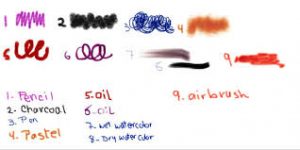7 Different type of painting that every artist should know

Riya Yadav, INN/Gwalior, @infodeaofficial
Throughout history, the way artists have painted and the mediums they use has evolved. New technology and changing tastes mean that the paints used by artists have continued to diversify. But how do you know which is the right type of paint for you?
Many of us are familiar with watercolor, oil, and acrylic paint, but there’s so much more out there for artists to explore.
OIL
For centuries, artists have been using oil paint to create their masterpieces. This slow drying medium is made from color pigments suspended in oil. Due to its long drying time, artists can take their time producing works.
ACRYLIC
There is a wide array of acrylic paints in terms of textures and drying time. This water-soluble paint dries quickly, is non-toxic, and cost-effective, often making it a go-to choice for painters of all skill levels. Over time it holds up better than oil paint, as it’s not prone to cracking or yellowing.
WATERCOLOR
Typically painted on paper, watercolors are made from pigments suspended in a water-based solution. Known for the transparent layers they create, watercolor paint remains soluble even when dry. This means that artists can make some corrections even when the painting is dry, but this also means that finished work must be protected carefully.
ENAMEL
This oil-based paint is most often used by sign painters or for decorative painting and pinstriping. It dries to a hard, high gloss finish that is weather resistant. Enamel can be used on different surfaces like glass, ceramics, metal, wood, and canvas. Due to toxicity, it’s always suggested to work in a well-ventilated area with a mask on.

TEMPERA
Though less commonly used today, tempera is one of the oldest types of painting and was traditionally created by grinding pigments into a binder. The most common type of tempera is egg tempera, which typically uses egg yolks mixed with a solution of vinegar or water as a binder.
INK WASH
Also known as literati painting, ink wash finds its origins in China and East Asia. The use of black ink in calligraphy led to the popularity of brush painting using the same inks. Artists achieve different tonalities by varying the amount of ink on the brush and the pressure with which the stroke is applied.
FRESCO
Fresco is an ancient technique that is perhaps best-known thanks to Michelangelo’s iconic Sistine Chapel ceiling. Buon fresco involves mixing pigment with water and applying it to a still wet layer of plaster. This method works better on a tougher surface but is less durable.




